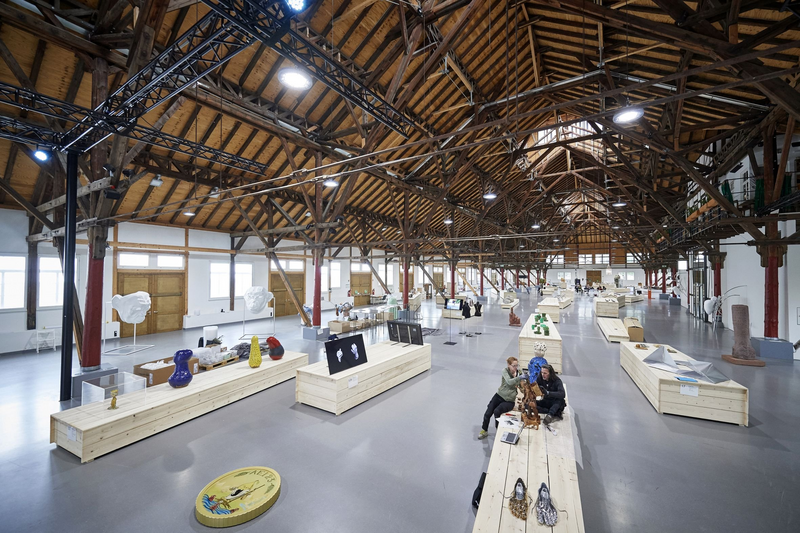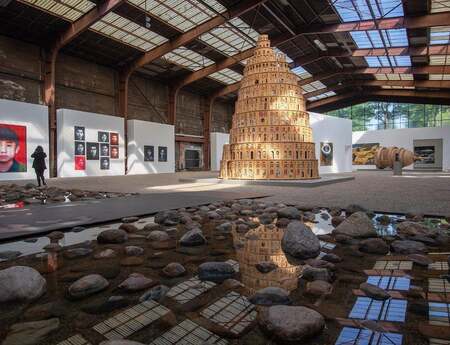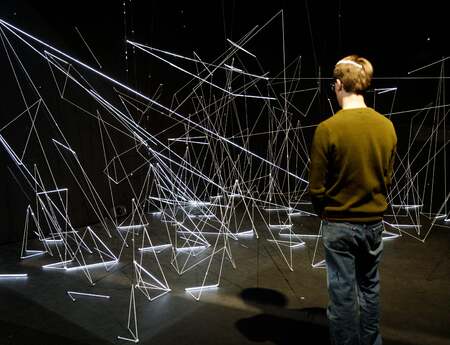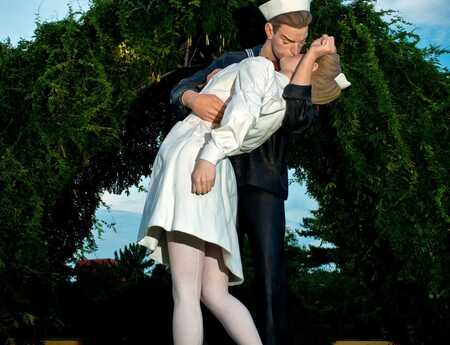Sculpture in Small Format
The Triennale in Fellbach is dedicated with full passion to small sculptures. The Triennale is taking place for the 14th time until the 29th of September 2019. Here you can find out what visitors can expect
Smallness is a very special measure. It implies transportability, closeness to the human body, the handmade or at least true-to-scale tangible with a certain model-likeness. Whether talismans, totems, fetishes, toys, Horcruxes or attributes - small sculptures were and are very often used close to humans or set up in the living environment. The result is a proximity between object and owner or observer, that is unusual for works of art today and has a direct effect on their meaning.
Committed to Small Sculptures
The oldest known works of art from mankind come from the vicinity of Fellbach: small, ice-age sculptures of the Swabian Alb that were created around 40,000 years ago. In 1980, the works gave Fellbach the decisive opportunity to initiate an exhibition of small sculptures. Since then, the event has taken place every three years. In the past, the thematic focus was on geographical and geopolitical aspects, but in 2001, due to increasing globalization, the attention turned to aesthetic, art historical and sociological questions. The success story of the Triennale has been written about by its artistic directors: the ever-changing, respected curators have a great deal of leeway in terms of concept and artist selection. Only the superordinate term "small sculpture" is mandatory. This guarantees a high degree of innovation and uniqueness for each individual triennial. The exhibition is also uncompromisingly committed to the current art discourse.

The 14th Triennale Small Sculpture
This year's Triennale takes place from June 1st, 2019 to September 29th, 2019 and was curated by Dr. Brigitte Franzen. Inspired by the sensational finds of the 40,000-year-old figurines in the caves of the nearby Swabian Alb, Franzen's concept advocates a polyphonic, model-like, and anthropological view of contemporary art. For this reason the historical objects, some being high-quality replicas, are exemplarily integrated into the exhibition. "40,000 - A Museum of Curiosity" is the title of the 14th Triennale Small Sculpture. The small sculptural format is particularly suited to illustrate aspects of artistic drive, mimesis, world explanation, experiment, and innovation. Works by over 50 international artists are represented illustrating the knowledge-oriented and researching impulse of pictorial processes. Artists are experts for an anthropological movement, for the creation of a work in the interplay of memory and hand. This issue is to be explored as an example and is of particular relevance with regard to current developments in the fields of automation and digitization. The concept is based on a non-uniform, mutually inspiring history of objects of free art, cult, and utility. Despite a globalized world, cultural, and aesthetic differences exist in different cultural circles. Looking back on the art production of earlier times shows how curiosity and the necessity of interpreting the surrounding world or countering it with model-like counter-designs is an anthropological constant of artistic work. Art takes place in the confrontation with nature, with the surrounding as well as with the human body, be it in the form of transgression of natural boundaries or as an attempt at reconciliation with nature.
An Exhibition that Remains in the Memory
The exhibition venue is the Alte Kelter (Old Winepress), built in 1906. While it was the largest production site in Württemberg at the time, it remained unused for a long time. Only in September 2000 was it reopened as a multifunctional House of Culture. With around 2,500 square metres of exhibition space, the Alte Kelter has one of the largest exhibition rooms in southern Germany. The building combines the functionality and sobriety of a purpose-oriented industrial architecture with the craftsmanship of timber-frame construction. Particularly impressive is the enormous, openly visible roof truss, which covers the entire area of 3,000 square metres. As a "museum of curiosity", the mighty Alte Kelter in Fellbach offers a special artistic experience and embeds the Triennial in the overall context of the Remstal Garden Show, which will take place simultaneously in 16 municipalities along the Rems. A varied supporting program with around 250 guided tours for adults, students, children and school classes, workshops, lectures, readings, panel discussions, concerts as well as participative offerings that will permanently enliven the exhibition.

40,000 - A Museum of Curiosity
Alte Kelter Fellbach
Untertürkheimer Straße 33
70734 Fellbach
Author: Claudia Thiel
Claudia Thiel is an art historian and likes to pose her questions to the subject area in a journalistic style.
Cover picture: Grayson Perry, Wise Allan, 2019, Triennale Fellbach © Peter D. Hartung 2019.




